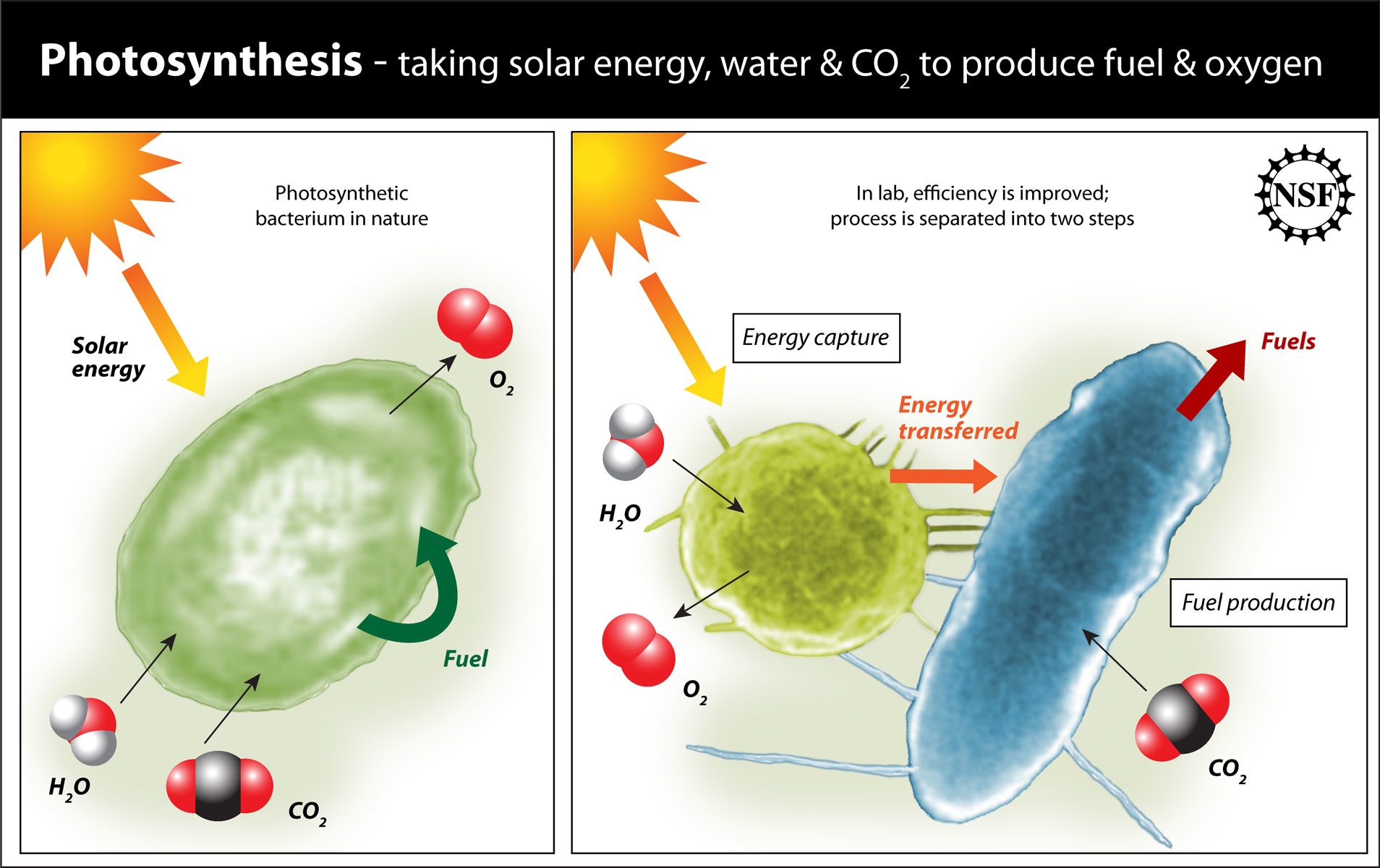Science News
Improving Photosynthesis
March 2, 2012

Photosynthesis allows plants to convert sunshine into food and energy. The original renewable resource, the chemical process has existed for millions of years. Now, cutting-edge research is trying to improve upon the photosynthetic process to solve future global issues like food shortages and cleaner, renewable fuels.
Photosynthetic organisms (plants, algae, cyanobacteria) convert light and carbon dioxide (CO2) into carbohydrates. But what works efficiently for these organisms is inefficient for our needs, according to Anne Jones of Arizona State University, speaking at a presentation at this year’s AAAS meeting.
In the two-step process of photosynthesis, there is light-harvesting and fuel-producing. Between the two steps, much of the light energy plants receive gets lost along the way. “As it is, photosynthesis is a badly connected electrical grid. We'd like to make it better,” Jones said at the conference.
Her idea is to harness the excess solar energy by using biological nanowires to transfer energy absorbed in a photosynthetic light-harvesting cell to a second fuel-producing cell. She will try this on cyanobacteria in her lab.
Where Jones will use nanowires, her colleague, Richard Cogdell of the University of Glasgow, will create batteries to store energy created from photosynthesis. His team uses synthetic biology to make a structure that can directly convert energy from the sun into fuels such as hydrogen or ethanol, not electricity like current solar cells create.
“Renewable sources are intermittent—and that’s the problem. It’s all about the storage. Energy supplies available on demand is one of the grand challenges that humanity faces,” Cogdell said.
He admitted that “we’re a long way from a solution, but we have the blueprint to tackle that problem.” He looks forward to finding the answers in this budding area of research, but he also knows that scientists must work together to solve these challenging problems. “Each researcher in improving photosynthesis is tackling a different area, we talk to each other, and are working together and learning from each other. We’re not little silos, but a tight community… We want to inspire the young people to power this research forward.”
Image: Zina Deretsky, NSF